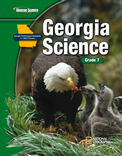1 <a onClick="window.open('/olcweb/cgi/pluginpop.cgi?it=jpg::::/sites/dl/free/0078778425/516795/aa.jpg','popWin', 'width=232,height=221,resizable,scrollbars');" href="#"><img valign="absmiddle" height="16" width="16" border="0" src="/olcweb/styles/shared/linkicons/image.gif"> (9.0K)</a> A) John Needham B) Louis Pasteur C) Lazzaro Spallanzani D) Francesco Redi 2 <a onClick="window.open('/olcweb/cgi/pluginpop.cgi?it=jpg::::/sites/dl/free/0078778425/516795/aa.jpg','popWin', 'width=232,height=221,resizable,scrollbars');" href="#"><img valign="absmiddle" height="16" width="16" border="0" src="/olcweb/styles/shared/linkicons/image.gif"> (9.0K)</a> A) The broth was not boiled. B) Flies contaminated the broth. C) The broth was exposed to dust in the neck of the flask. D) Decaying meat caused the broth to be contaminated. 3 A) conclusion. B) variable. C) hypothesis. D) theory. 4 A) kilometers B) millimeters C) grams D) milliliters 5 <a onClick="window.open('/olcweb/cgi/pluginpop.cgi?it=jpg::::/sites/dl/free/0078778425/516795/ab.jpg','popWin', 'width=311,height=152,resizable,scrollbars');" href="#"><img valign="absmiddle" height="16" width="16" border="0" src="/olcweb/styles/shared/linkicons/image.gif"> (14.0K)</a> A) an increase in cell size B) an increase in the number of cells C) an increase in cell water D) an increase in cell energy 6 <a onClick="window.open('/olcweb/cgi/pluginpop.cgi?it=jpg::::/sites/dl/free/0078778425/516795/ab.jpg','popWin', 'width=311,height=152,resizable,scrollbars');" href="#"><img valign="absmiddle" height="16" width="16" border="0" src="/olcweb/styles/shared/linkicons/image.gif"> (14.0K)</a> A) reproduction B) homeostasis C) growth and development D) response to stimulus 7 A) oxygen B) carbon dioxide C) water vapor D) hydrogen 8 A) reproduction B) development C) organization D) use of energy 9 A) analyze data B) draw conclusions C) state a problem D) perform an experiment 10 A) cells B) organisms C) muscles D) fibers 11 <a onClick="window.open('/olcweb/cgi/pluginpop.cgi?it=jpg::::/sites/dl/free/0078778425/516795/ac.jpg','popWin', 'width=322,height=348,resizable,scrollbars');" href="#"><img valign="absmiddle" height="16" width="16" border="0" src="/olcweb/styles/shared/linkicons/image.gif"> (31.0K)</a> A) plants are unaffected by light B) plants do not need light C) plants grow away from light D) plants grow towards light
















